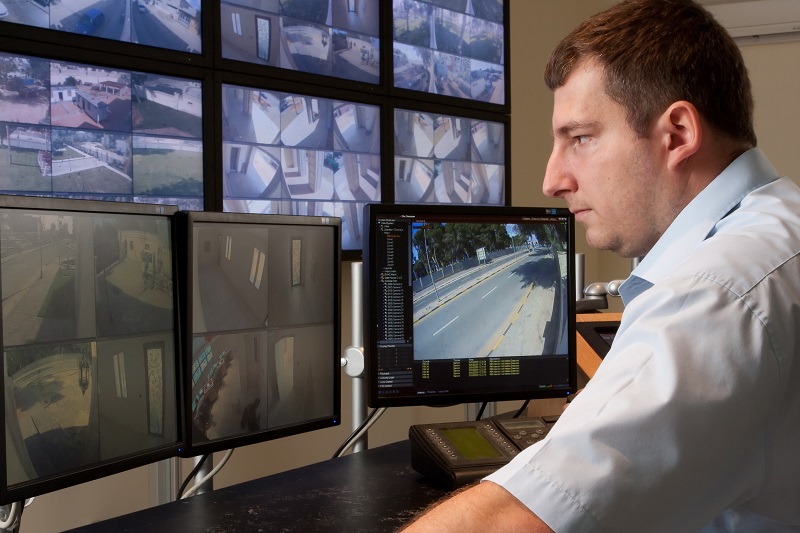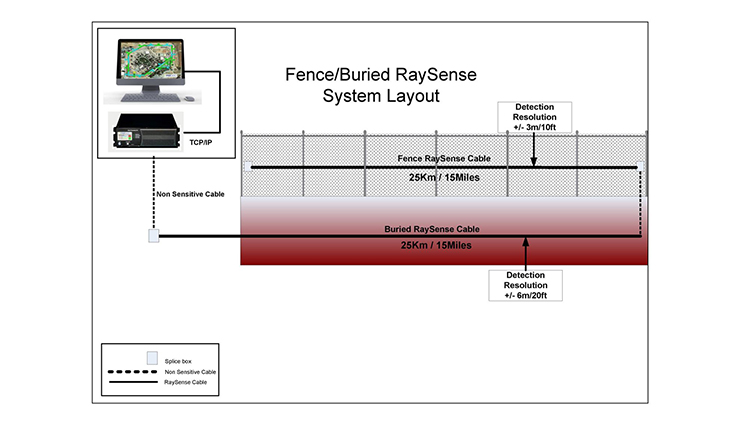The Ultimate Overview to Fiber Optic Security Systems for Your Organization
In an age where safety and security issues are vital for companies, comprehending the ins and outs of fiber optic technology can be transformative. This guide lays out how integrating fiber optic safety systems not just enhances data defense but also offers advantages like resistance to interference and real-time surveillance capabilities. As organizations assess their security needs, it comes to be critical to take into consideration the setup procedure and the most recent technologies in the field. What details variables should be focused on when selecting the right system, and just how can services ensure they make the most enlightened choices?
Comprehending Fiber Optic Modern Technology

The core of a fiber optic wire consists of a slim glass or plastic facility, bordered by a cladding layer that shows light back into the core. Single-mode fibers are made for long-distance transmission, while multi-mode fibers are appropriate for much shorter ranges, often made use of within buildings.
Fiber optics are not just quicker however additionally more protected than conventional wiring. Their intrinsic resistance to electromagnetic interference and the problem of touching into the signal without detection make them a preferred choice for businesses focusing on data stability and protection. As organizations increasingly depend on secure and efficient interaction systems, comprehending fiber optic technology comes to be essential for informed decision-making.
Secret Benefits of Fiber Optic Security
When considering safety and security choices for a company, the advantages of fiber optic systems are specifically compelling. Fiber optic modern technology provides remarkable information transmission speeds and bandwidth capability, making it ideal for dealing with high-resolution video feeds from security electronic cameras. This ability makes sure that safety and security personnel receive real-time data, improving total response times to possible protection risks.
Additionally, fiber optic cords are inherently immune to electro-magnetic disturbance, which can compromise the integrity of standard copper-based systems. This resistance ensures that the data transmitted stays safe and nonstop, offering an extra trustworthy protection facilities. Additionally, optical fiber are much less vulnerable to physical damage, as they are made from glass instead than steel, minimizing upkeep costs and downtime.
One more considerable advantage is the boosted scalability of fiber optic systems. As service demands evolve, fiber networks can be easily broadened to suit additional safety gadgets without considerable overhauls to the existing facilities. Fiber optic systems supply improved cybersecurity attributes, consisting of you can check here file encryption capacities that shield sensitive information from unapproved access. Collectively, these benefits make fiber optic safety and security systems a robust selection for services looking for to boost their safety steps.
Installation Process and Considerations
Considering the intricacies involved, the installation procedure of fiber optic safety systems calls for cautious preparation and implementation. The initial action entails a comprehensive website analysis to determine optimal places for cabling and equipment. This evaluation must consider environmental factors, existing facilities, and possible susceptabilities.

In addition, the installment needs to follow regional building ordinance and industry criteria. This may include coordinating with various stakeholders such as building supervisors, IT teams, and protection employees to make certain seamless integration with existing systems.
Post-installation, extensive testing is required to confirm system performance and identify any issues that might occur. By prioritizing these considerations during the setup process, businesses can guarantee a durable and effective fiber visit this site optic security system that meets their particular security needs.
Most Recent Developments in Fiber Optic Safety And Security
Recent improvements in fiber optic innovation have actually significantly improved the capacities of safety systems for businesses. Among the most notable technologies is the combination of fiber optic sensors that can spot vibrations and intrusions along the perimeter of a center. These sensing units supply real-time surveillance, making it possible for fast action to potential breaches.
In addition, the growth of dispersed fiber optic noticing modern technology permits the continual monitoring of large areas with a single fiber wire. This method not only decreases setup prices however also boosts the reliability of keeping an eye on systems by getting rid of the requirement for multiple, different sensors.
Additionally, innovations in multiplexing strategies have actually enabled companies to transfer vast quantities of information over fiber optic networks, enhancing the capabilities of video clip surveillance systems. High-definition video clip feeds can currently be sent out over cross countries without loss of high quality, ensuring that security personnel click here for info have access to clear and workable info.
Lastly, the use of expert system (AI) along with fiber optic systems is reinventing threat detection. AI formulas can assess data from fiber optic networks to recognize uncommon patterns or habits, enabling aggressive security steps. These innovations jointly stand for a significant jump onward in fiber optic security modern technology.
Choosing the Right System for Your Service
Selecting the proper fiber optic safety and security system for your business is critical for making sure optimum protection and satisfaction. To make an informed choice, examine your particular security requirements, considering aspects such as the dimension of your properties, the nature of your procedures, and possible vulnerabilities.
Begin by assessing the degree of safety and security needed; for example, high-risk settings might demand innovative systems with integrated surveillance and intrusion detection abilities. Next off, consider scalability; as your service grows, your protection system must be qualified of expanding to suit raised needs without considerable overhauls.
In addition, investigate the reliability and efficiency of numerous systems. Look for providers with established track records and client endorsements that vouch for their service quality. It's likewise recommended to ask about the technology's compatibility with existing framework, making sure a seamless integration process.
Conclusion
In verdict, fiber optic safety systems present a robust solution for boosting service protection facilities. The combination of high-speed data transmission, resistance to electromagnetic interference, and progressed tracking capacities dramatically enhances overall security (fiber optic security system). By comprehending the innovation, recognizing its advantages, and considering the setup process, companies can make informed choices. The newest innovations better strengthen the efficiency of these systems, ensuring that companies stay safe and adaptable in an ever-evolving risk landscape.